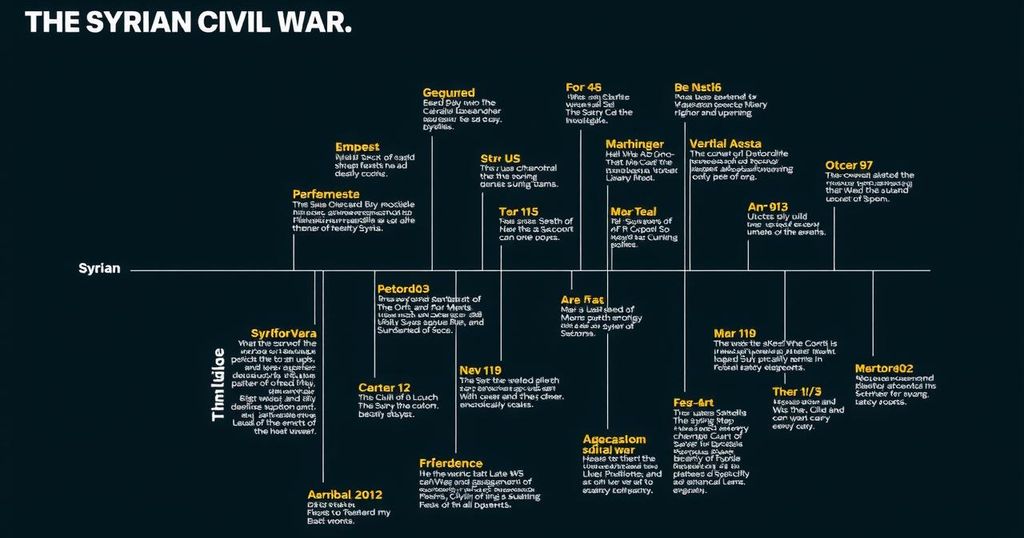The Syrian Civil War commenced in February 2011 when widespread protests against President Bashar al-Assad’s authoritarian regime erupted due to political and economic grievances. The Assad government responded violently, leading to the emergence of opposition militias and a full-scale civil war by 2012. The conflict has sectarian dimensions, with international powers taking sides, complicating resolution efforts and resulting in severe humanitarian repercussions.
The Syrian Civil War, which began in February 2011 and continues to the present day, was rooted in a climate of political oppression and economic hardship under President Bashar al-Assad’s regime. These discontents erupted into widespread protests demanding democratic reforms, following a pattern of uprisings that characterized the Arab Spring across the region. Initially, the Assad government responded violently to the protests, employing police and military forces to suppress dissent. Opposition militias began to form, leading to a descent into a full-blown civil war by 2012. The protests initially stemmed from a severe drought that devastated the agricultural sector, leading to mass migration from rural areas to urban centers and exacerbating socio-economic disparities. The first significant protests emerged in the impoverished province of Darʿā, triggered by the arrest and torture of children who had painted anti-government graffiti. As the government’s crackdown intensified, videos of state violence circulated, captivating national and international attention. The conflict took on a sectarian dimension, primarily split between the Sunni majority and the ruling Alawite minority, which fostered further divisions within Syrian society. While the Assad regime portrayed the opposition as extremist Sunni factions backed by foreign powers, the socio-economic grievances transcended sectarian lines, though the narrative increasingly hardened as the war progressed. By mid-2011, the international community had begun to take sides, with the United States and European nations condemning Assad’s actions and calling for his resignation. Conversely, Syria’s allies, notably Iran and Russia, continued to provide vital support, further complicating the resolution of the conflict. As a result, the Syrian Civil War not only represents a local struggle but has transformed into a battleground for international interests and geopolitical rivalries.
The Syrian Civil War represents a significant chapter in the historical narrative of the Middle East, influenced by long-standing authoritarian governance, socio-economic issues, and the legacy of the Arab Spring. Under Bashar al-Assad’s leadership, the country faced widespread disenfranchisement, leading to protests rooted in a combination of political demands and economic grievances. Environmental factors, such as unprecedented droughts, exacerbated the conditions that led to civil unrest, showcasing the interplay between ecological and sociopolitical variables in contributing to the uprising.
The Syrian Civil War, lasting over a decade, illustrates the complexities intertwined with authoritarianism, socio-economic inequality, and sectarian divisions. The initial peaceful protests evolved into a protracted and destructive conflict, drawing in international powers and highlighting the multifaceted nature of modern warfare where local grievances intersect with global politics. The humanitarian repercussions continue to be significant, necessitating ongoing attention and intervention from the global community to address the crisis.
Original Source: www.britannica.com






